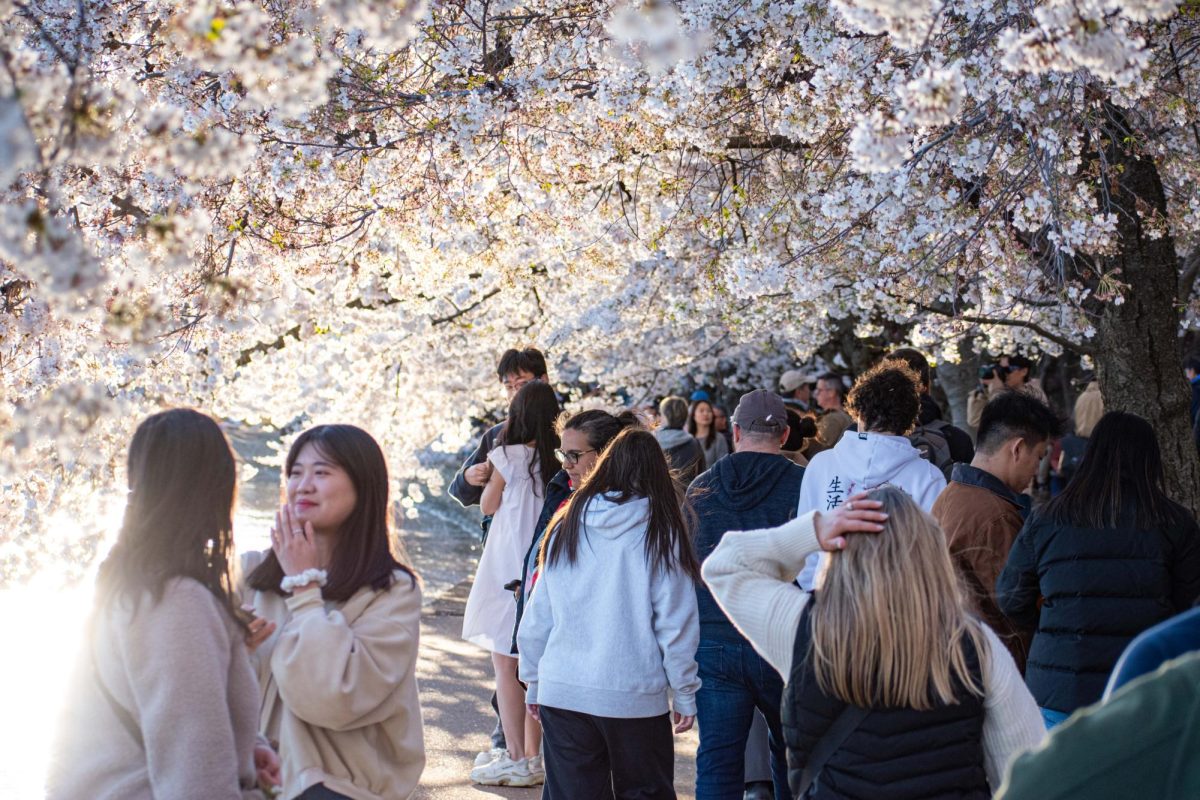Worlds apart from the collegiate hustle and bustle of Foggy Bottom, the 14th Street neighborhood retains a cooler mystique punctuated by glowing pockets of theater, ethnic carryout and edgy galleries. The difference is palpable and enticing. Actually, there’s something quite magical about the chilled solitude of 14th street on a March evening.
Even more magical is the feeling of stepping inside one of these pockets of culture. Walking to Irvine Contemporary, I could sense the stories of an evening yet-to-be-had swirling throughout the streets. Cabs cruised by in the dark while hordes trekked to the U Street corridor. This shadowy uncertainty enveloping the city was cut short upon entering the gallery. The halogen glow of art-appreciation, vintage hipsters (not all of them wearing vintage, if you catch my drift) and free booze warmed me immediately.
On the evening of March 3, Irvine Contemporary was pleased to present Joseph McSpadden’s first solo-exhibition, “Flesh and Bone.” I was pleased they presented it, too. The pristine white walls of this premier 14th Street gallery were adorned with the fruits of McSpadden’s laborious contemplations about the fluid inter-properties of flesh and oil paint. There were two primary modes of display in the show. One mode was comprised of horizontal white planks mounted on the wall which served as atypical “canvases,” supporting large, colorful pebbles of oil paint. This mode alternated with long, dripping strips of oil paint secured by clear perpendicular pegs.
Na’ve and caught in the human-natured trap of a needing to categorize the uncertain, a friend and I stopped at each piece wondering, “Which one is flesh and which one is bone?” As we examined one of the long strips, my fellow observer declared, “This one is definitely representative of a long-bone. You can see the peach and red tones for flesh and blood and the blues represent veins.” Considering she was in med-school, I nodded in agreement.
Attempting to detach myself from such literal analysis, I tried to examine each piece simply as a physical creation. To me, McSpadden’s liquid craftsmanship was reminiscent of Pollack. There was a careful level of carelessness, an apparently calculated spontaneity. The strips, vibrantly resembling silly putty, practically begged me to twist off a piece and mush it in my hand. But their precisely stretched application onto the small Lucite pegs reminded me that this was real, untouchable art. Just as captivating as the actual strips in all their extensible glory were the ghastly shadows cast behind them. The shadows served as grey intermediaries between the sterility of the gallery dry-wall and McSpadden’s radically pulpy interpretations.
As we walked through, our “Flesh or bone?” question seemed less and less answerable. Red and peach gave way to marigold and midnight. The long strips of paint ceased their uniform verticality and began to zigzag around meandering pegs. The white blocks were no longer just topped with globs of paint but surrounded by them on all sides.
After sitting on the central gallery bench in confused amazement, I decided to approach Mr. McSpadden directly. The man I shook hands with shattered the mental picture I had assembled in my head. Let’s just say my preconceived idea didn’t include a flaxen blonde twenty-something glowing with an innocent and genuine kindness. In talking with the artist, I learned more than I ever could have had I simply read the press release and viewed the work. McSpadden described his journey from figure-painter to figure-painting-deconstructionist, from traditional to radical. He described his impetus for the body of work as a way of getting down to the elements of the figure. Influences include those artists gone before who accepted the scandalous duty of carrying the history of rendered flesh, ranging from Caravaggio to de Kooning. In fact, McSpadden informed me that he drew from the very flesh of the paintings of these masters in creating the work on display. He was also able to enlighten my literal “flesh or bone” classification. He hadn’t intended any particular piece to represent a piece of flesh or a bone directly, but rather wished “… to confront our expectations of painting, questioning how the object is animated and who is responsible for animating it.”
McSpadden’s reconstructive impressionism cannot be categorized. Some say paintings, some say sculptures. Some say bone, some say flesh, but until you are face-to-face with Flesh and Bone there is no describing the impact of such a daring exhibition.
The exhibition is running from March 3 – April 7 at the Irvine Contemporary gallery on 1412 14th St. N.W. Admission is free and the gallery is open from 11-6pm Tuesday – Saturday and by appointment.




